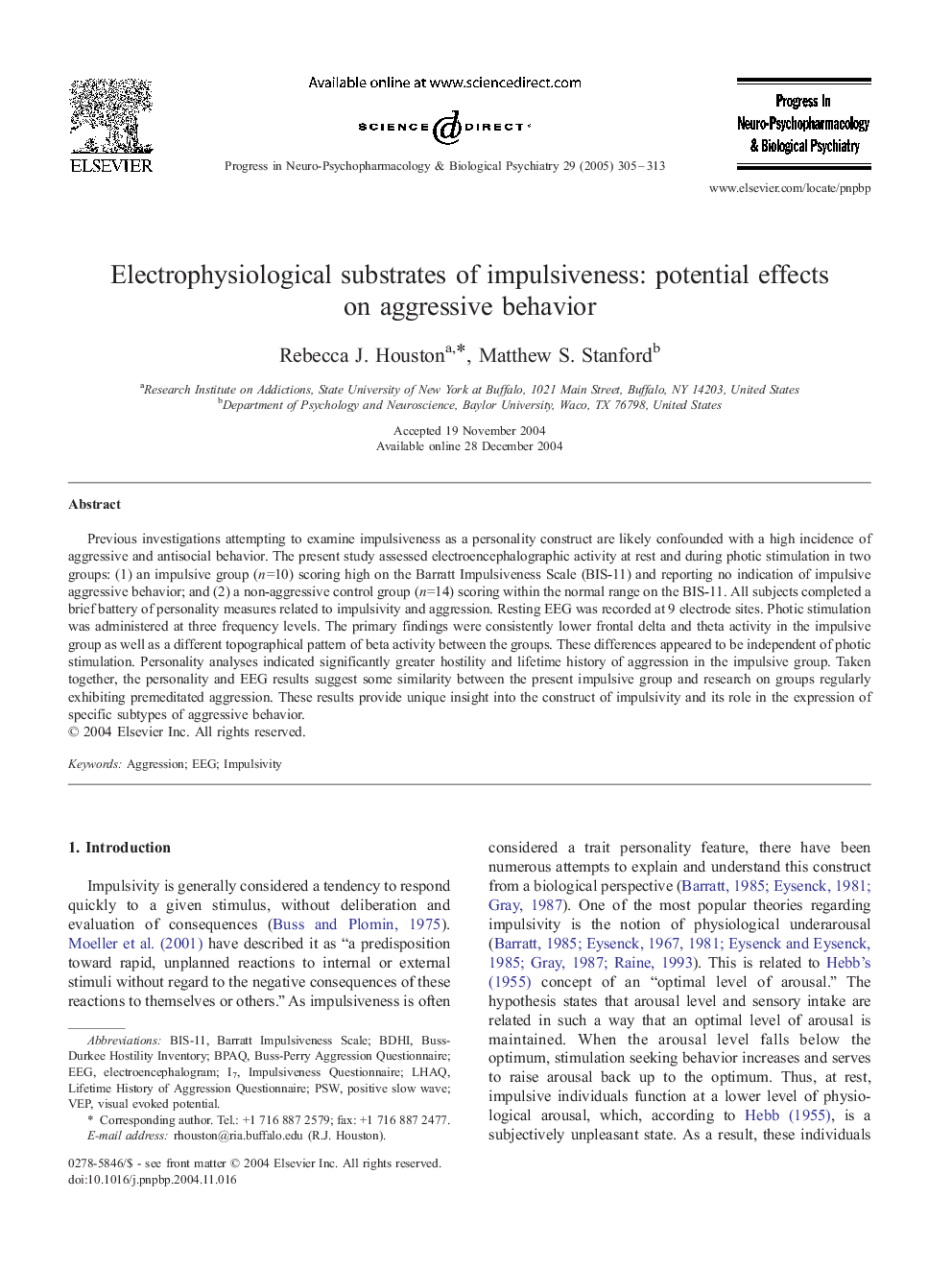| Article ID | Journal | Published Year | Pages | File Type |
|---|---|---|---|---|
| 9016475 | Progress in Neuro-Psychopharmacology and Biological Psychiatry | 2005 | 9 Pages |
Abstract
Previous investigations attempting to examine impulsiveness as a personality construct are likely confounded with a high incidence of aggressive and antisocial behavior. The present study assessed electroencephalographic activity at rest and during photic stimulation in two groups: (1) an impulsive group (n=10) scoring high on the Barratt Impulsiveness Scale (BIS-11) and reporting no indication of impulsive aggressive behavior; and (2) a non-aggressive control group (n=14) scoring within the normal range on the BIS-11. All subjects completed a brief battery of personality measures related to impulsivity and aggression. Resting EEG was recorded at 9 electrode sites. Photic stimulation was administered at three frequency levels. The primary findings were consistently lower frontal delta and theta activity in the impulsive group as well as a different topographical pattern of beta activity between the groups. These differences appeared to be independent of photic stimulation. Personality analyses indicated significantly greater hostility and lifetime history of aggression in the impulsive group. Taken together, the personality and EEG results suggest some similarity between the present impulsive group and research on groups regularly exhibiting premeditated aggression. These results provide unique insight into the construct of impulsivity and its role in the expression of specific subtypes of aggressive behavior.
Keywords
Related Topics
Life Sciences
Neuroscience
Biological Psychiatry
Authors
Rebecca J. Houston, Matthew S. Stanford,
